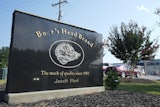This article originally ran in the April 2012 issue of Food Manufacturing.
The Food Manufacturing Brainstorm features industry experts sharing their perspectives on issues critical to the overall food industry marketplace. In this issue, we ask: What should food companies do to prepare their facilities to withstand potential disasters?
Bob Barnum, Vice President, Sales at GreCon, Inc.
Dust explosions are common in the food industry. After the 2008 explosion at Imperial Sugar, the Chemical Safety Board recommended that OSHA develop new regulations for combustible dust, but an update to the rules has not yet been made. As industry waits on updated rules, OSHA has announced that, besides wood products, food products are under the greatest scrutiny by the agency.
Plans and standard procedures can be made to reduce if not eliminate an explosion from occurring. Some proactive measures that can be taken are as follows:
- Install spark detection system in vulnerable dust collection systems
- Maintain good housekeeping practices
- Proper maintenance of process equipment to limit or prevent the generation of an ignition source
- Install dust collectors on the outside of buildings and away from personnel areas
- Properly explosion vent dust collection equipment
- Install explosion detection and suppression systems where appropriate
- Employee training on the risks of explosions as to where and how they can occur in their respective industry
The equipment most susceptible in receiving sparks or embers would be dust collection equipment and storage bins or silos. The type of process that is most likely to produce sparks or embers would be any type of dehydration, drying or fractionating equipment. Some food processes engage in the pelletizing of products, and this can also be a source of embers in the form of
overheated product.
Michael Brittingham, Marketing Communications Manager, TKO Dock Doors
Food distribution and cold storage warehouse facilities with overhead loading dock doors along coastal areas, often find their property and products susceptible to damage and spoilage from the high wind events associated with hurricanes and tropical storms, a phenomenon that seems to be becoming more and more prevalent along the country’s coastlines.
Following a series of costly storms in the 1990s, the State of Florida, boasting the country’s second longest coastline, took aggressive action in enacting regulations that require new construction adhere to more stringent wind load standards. No county took these new regulations more seriously than Dade County after surviving the devastating landfall of Hurricane Andrew that subsequently caused an estimated $25 billion in damages.
The Miami-Dade County Building and Neighborhood Compliance (BNC) Department set out to ensure the strictest standards for manufacturers to comply, including those for overhead sectional doors used at many warehouse and distribution facilities. These standards require a notice of acceptance and completion of an Air Pressure Test, Large Missile Impact Test, Cyclic Wind Pressure Loading Test, and a Forced Entry Test among others.
As a result of these rigorous requirements, there is currently only one overhead loading dock door in production today that has completed these and other tests to receive wind load approval for overhead sectional doors from Miami-Dade County’s BNC. These specialty industrial doors are helping coastal facilities sustain the unpredictable damage and devastation from high wind events, while also providing an operational safety net to reduce down time in the aftermath.






















